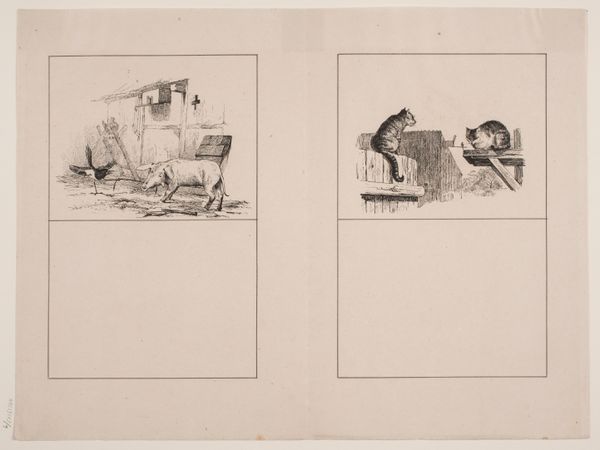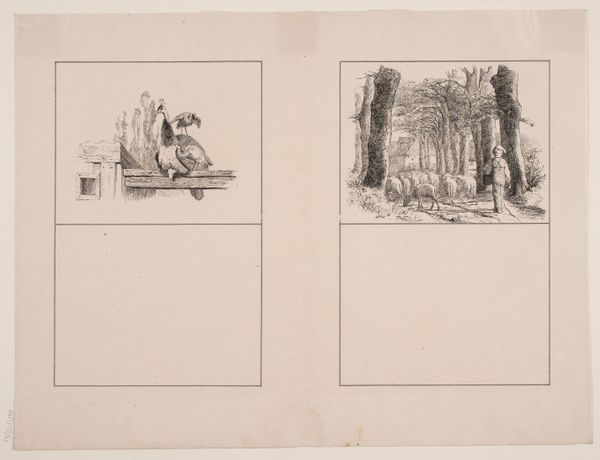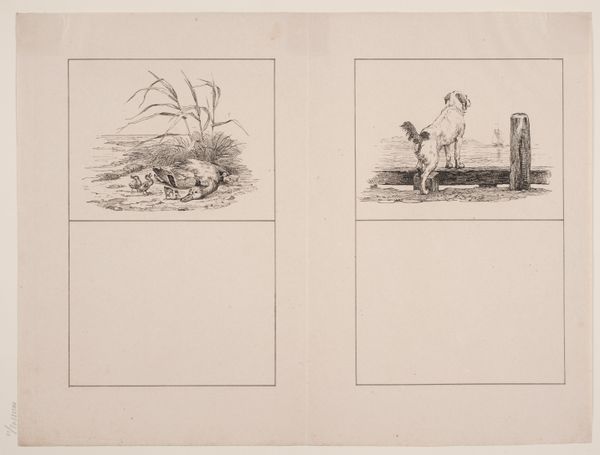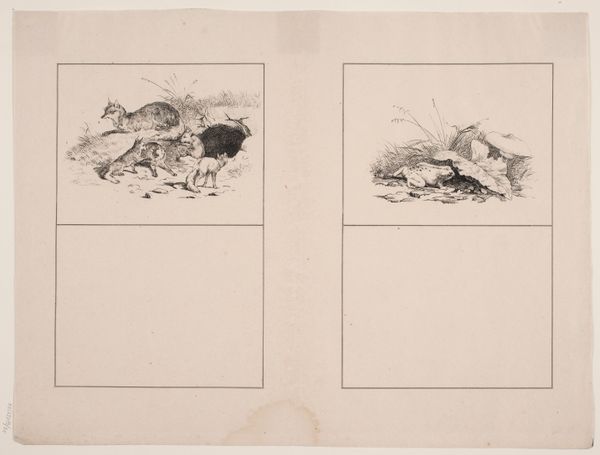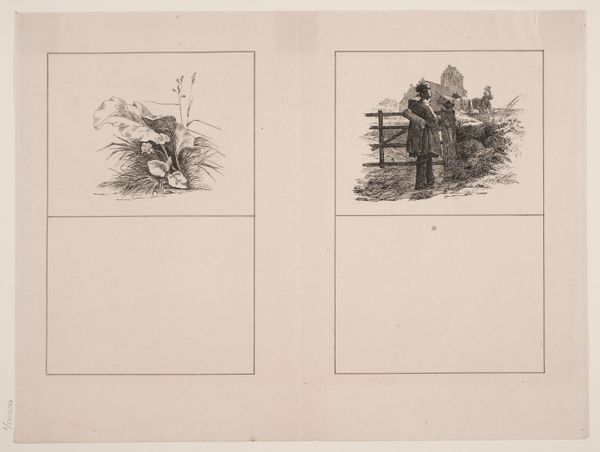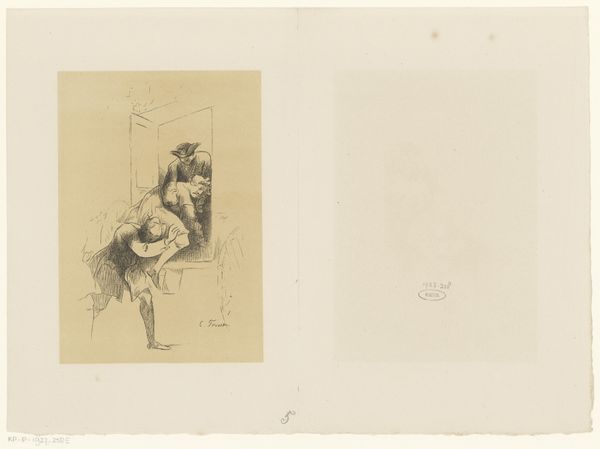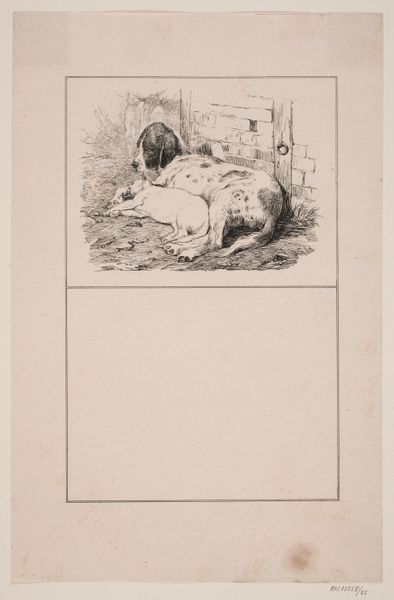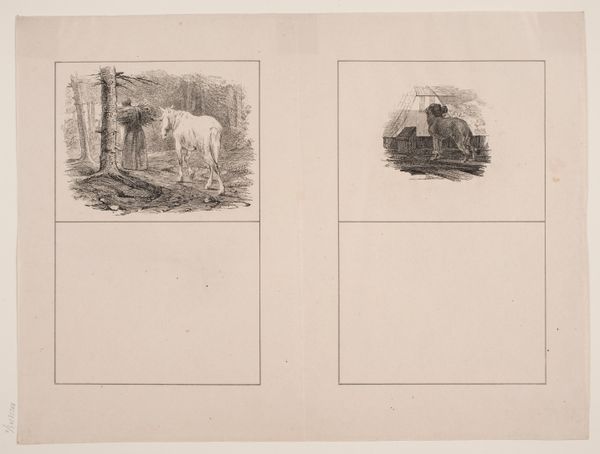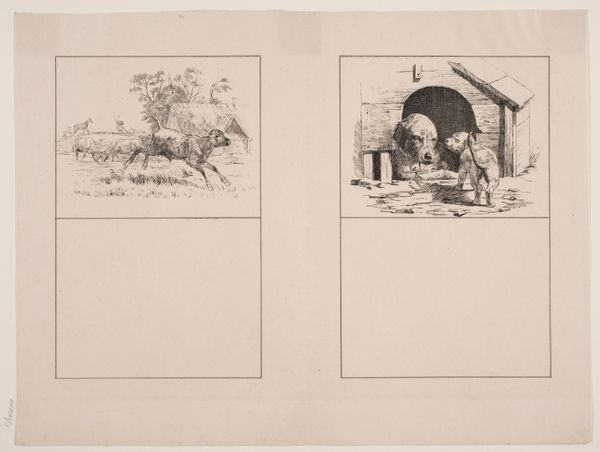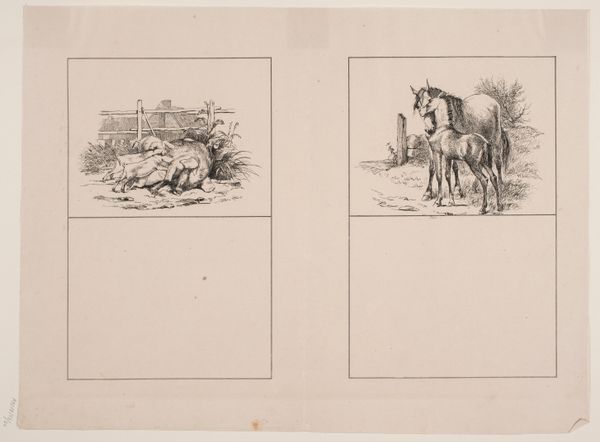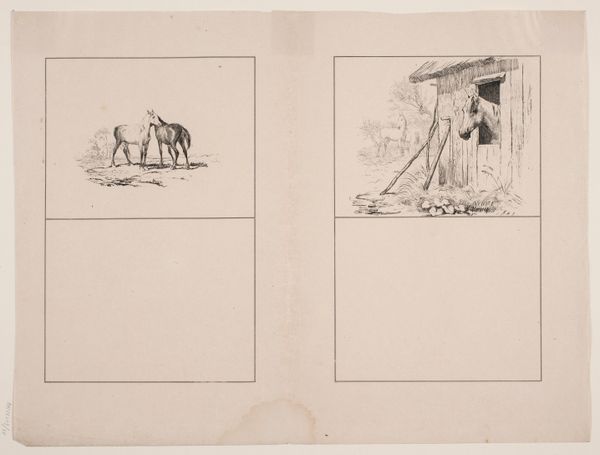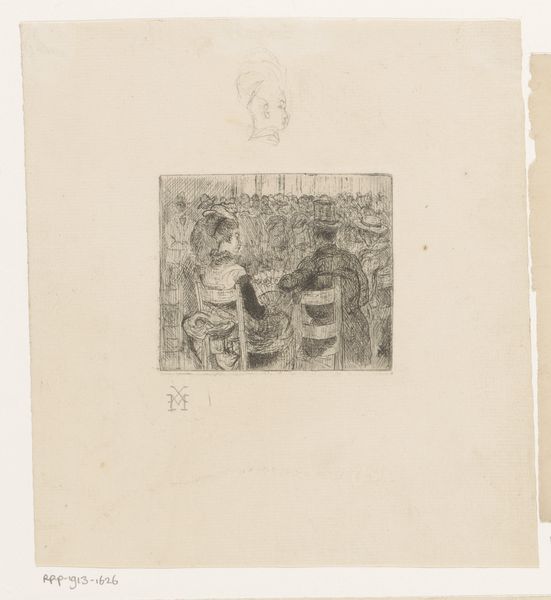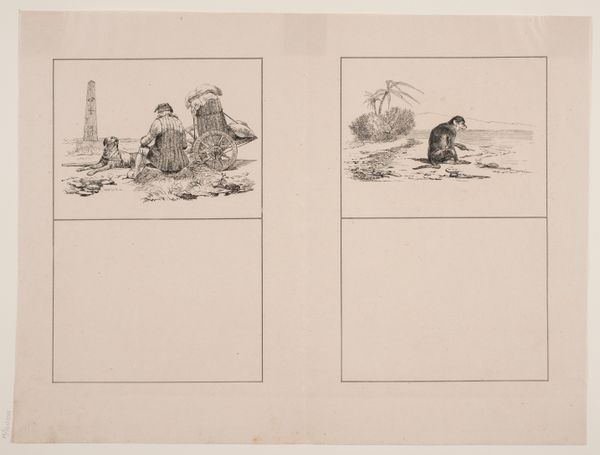
drawing, lithograph, print, paper
#
drawing
#
lithograph
# print
#
paper
#
genre-painting
Dimensions: 277 mm (height) x 362 mm (width) (bladmaal)
Curator: Editor: This is Adolph Kittendorff’s “Rumlepotten; De to venner” from 1845, a lithograph and drawing on paper. The lithograph is separated into two distinct scenes, both simple and evocative, almost like illustrations in a children's book. I’m curious, what social context do you see at play here? Curator: These types of prints were often made for popular consumption, circulating images and ideas amongst a wider audience. Lithography itself allowed for relatively cheap reproduction compared to other printmaking techniques. Does that inform how you view the content of each scene? Editor: Absolutely. Knowing that it was widely distributed changes my perspective. The image on the left shows children outside a building, potentially begging given the era, whereas on the right, we see animals resting; each panel hints at specific socio-economic positions. Was Kittendorff known for this kind of genre scene, using common settings and ordinary figures? Curator: He was deeply engaged with the everyday realities of Danish life, yes. Consider how the materials – the paper, the ink – and the process of mass production made it possible to disseminate these observations so widely. Did that affect the public perception? What societal values was it reinforcing, and conversely, which ones was it potentially questioning? Editor: I see, so it is not simply about *what* is depicted but *how* it was produced and circulated. Perhaps the juxtaposition between humans and animals forces the viewer to question the moral standards or social hierarchy. Are the 'friends' only among their own species or not? Curator: Precisely! And to think about who had access to these prints, what spaces they occupied, and how they participated in shaping opinions and cultural discourse in 19th-century Denmark. Editor: This has broadened my perspective immensely. I originally saw it as quaint and illustrative, but understanding the lithographic process, and social circulation opens new ways of viewing the art piece and historical period it came from. Curator: Indeed! By paying attention to the conditions of its production, we can ask complex questions and uncover rich insights.
Comments
No comments
Be the first to comment and join the conversation on the ultimate creative platform.
